Alice Bennett, Lilian Joy, Digital Accessibility Unit, University of York.
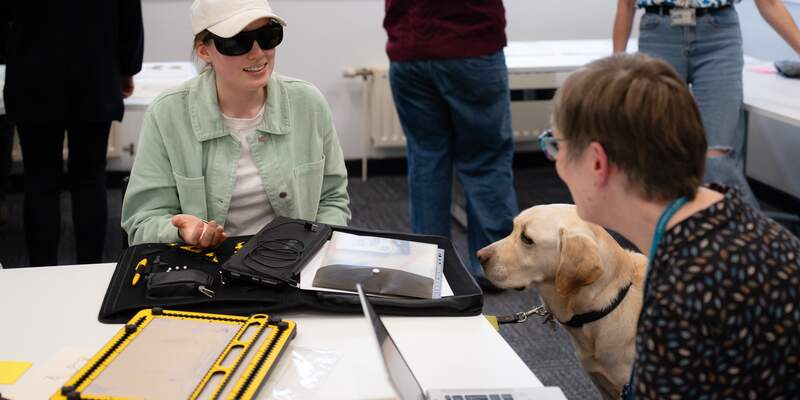
Context
Over 55 participants attended two workshops on Supporting Visually Impaired (VI) students held in September and October 2024. These workshops were the first of their kind run at the University of York, so were a little experimental. The workshops were instigated by a simple wish from one of our VI students: that staff could feel more confident about supporting someone like her. The sessions would help gauge interest in such workshops, but were also an opportunity to raise awareness of available support, as well as encourage the right kind of questions and help staff avoid some classic pitfalls.
Testing the water
As the response and general interest wasn’t clear, the sessions were open to any staff, so covered participants with prior experience of supporting visually impaired (VI) students and those with none, as well as participants from academic and professional support teams from across the university.
Both of us had years of supporting VI students and felt we had something to contribute, but we also put a call out to other staff to let us know if they were willing to share. We were pleased to have contributions from academics, a lab technician, a professional transcriber, professional support staff and two of our blind students.
The wide ranging experience and areas of interest from the participants presented something of a challenge in terms of covering relevant content for all attendees. However, the sign ups and feedback demonstrated that there is definite interest from staff in learning more about this type of accessibility support, so they give a strong and informative platform on which we can build for future sessions.
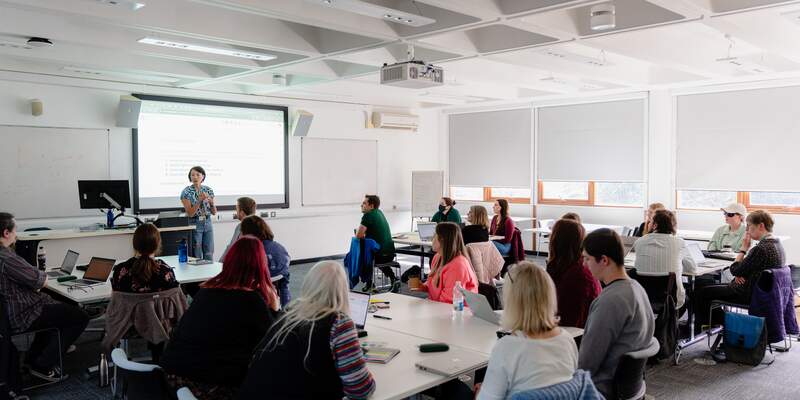
Workshop format
We set out tables for group discussion so that up to six people could sit at a table. We tried to ensure there was some expertise or previous experience at each table although this wasn’t always possible. We provided some scenarios of challenges our VI students have faced over the years to help stimulate conversation at the table. These were made available in a Padlet as well as a Google doc. Each group worked on different scenarios and contributed some ideas for solutions or else added some further questions in the Padlet, Google doc or even using sticky notes.
Getting familiar with the scenarios and getting feedback from each group can be time consuming in a 1.5 hour workshop. We learned this the hard way at our first workshop and so in the second workshop, we sent out the scenarios in advance, and we focused on one question from each table that could be directed to anyone in the room. This helped with the pacing and the value we were getting from the session, as well as helping us to start an FAQ (Frequently Asked Questions) log. The second part of the workshop allowed participants to explore the materials set out at other tables consisting of tactile learning resources like 3D printed objects, raised line drawings (made by printing out pictures on Swell touch paper), drawing mats and braille tools. Participants could also spend time exploring with the two blind students how they approached learning with their braille devices (eg QBraille XL) and other tactile tools like the Tactipad and braille slate.
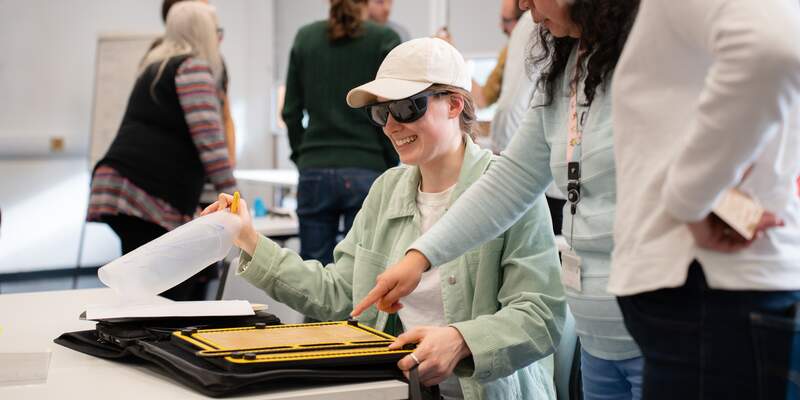
Feedback from participants
We sent out a feedback form to attendees to gauge what they had learned and how we could make improvements. Many attendees valued the opportunity to discuss approaches and ideas with colleagues from other departments, finding these exchanges valuable in broadening their understanding and approach. They really valued the perspectives of the VI students and those from the first workshop wanted more of this, which we were able to provide to attendees of the second workshop. They also suggested a more formal presentation at the beginning to help everyone understand what was available at the University.
Attendees learned about various tools available at the university to help VI students and insights into their daily challenges. They learned that simple practices like remembering to say a VI students’ name when talking to them in group work could be helpful. They also realised how support practices varied enormously across departments and how they all needed to work together.
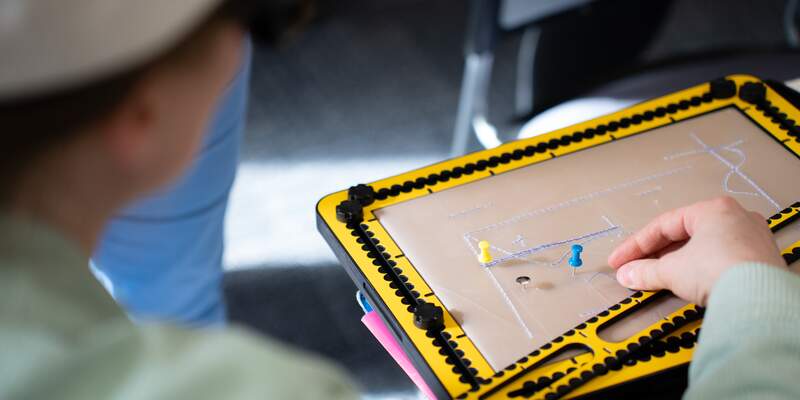
They felt the first hand accounts from VI students were invaluable for helping them understand the challenges but wanted more practical insights into how things like tagged documents actually helped and how adjustments made a difference. Attendees suggested having a central hub of information and resources could really help them feel more confident about supporting VI students as well as a community channel where they could seek on-going support.
Our reflections – Centring without burdening
Organising sessions like this presents a conundrum – how to centre the disabled student voice, whilst not burdening the student. Sessions like this typically rely on the good will of students and many are willing to volunteer their time to improve things, but this must not be exploited. It should be remembered that in explaining problems they have faced, students are reliving potentially uncomfortable or even upsetting situations relating to their disability. It might require them to repeat explanations which they are often forced to give. Whilst this first person testimony is powerful, it can ask a lot of the speaker. There is also the potential discomfort around power imbalance in asking students to lead such a session. Students may be asked to explain failures of provision in front of their lecturers and other staff from their department – this is potentially a very uncomfortable situation in which to place a student, especially as they have given up their time to help educate others.
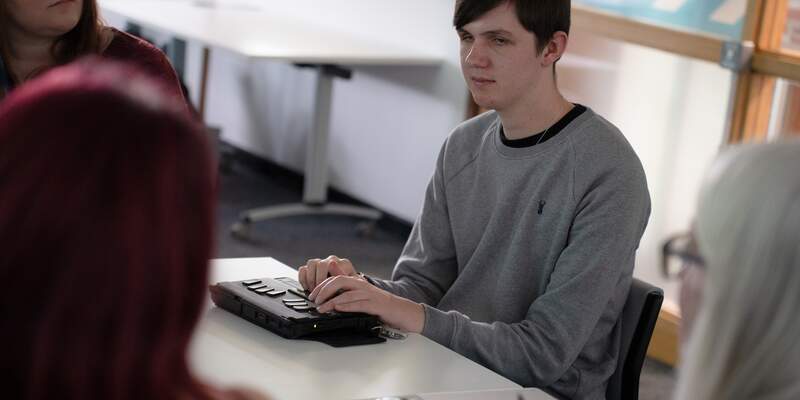
Aside from the potential discomfort, there is also the issue of capacity. One of the points key to the workshop was to try to convey the problem of cognitive load, emphasising the extra work that disabled students, and specifically VI students in this instance, undertake to be able to complete the same tasks as their non-disabled counterparts. However feedback after the session asked for more from the students. The impulse to centre the student voice is great, but this does need to be tempered by the burden this places on the student.
Additionally, whilst it is vital to represent the disabled student perspective of the challenges they face, it is not the responsibility of the students to suggest the solutions to these. This is a wider issue within much Equality, Diversity and Inclusion (EDI) work – it should not be on the marginalised group to solve the problems of their treatment. In this case, this isn’t just an issue of emotional labour – besides the additional cognitive burden, there is no reason why students would be aware of the existing or potential technical solutions to digital accessibility problems. It is not only not their responsibility to suggest solutions, they are also not best placed to do so.
The student voice needs to be centred, but whilst not exploiting the generosity of students with their time, without making this an additional burden and without any expectation that they should volunteer the solutions to the problems. This is a delicate and difficult balance to achieve.
Timing of Session: Is the future faculty-based?
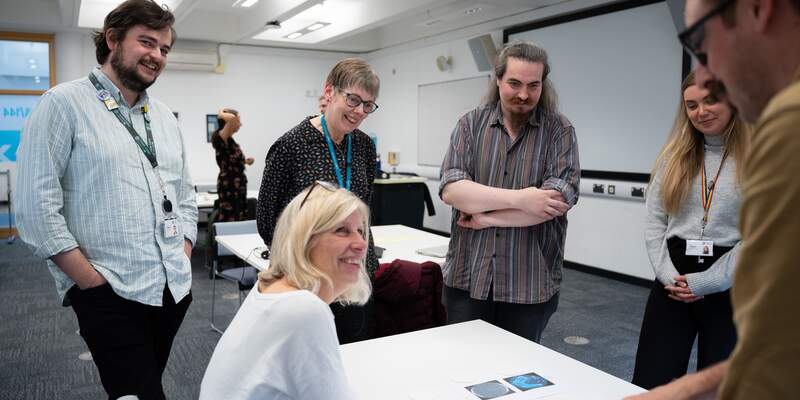
The workshop was held in person, which gave opportunities for people to see technology like a brailler up close, as well as have a closer look at 3D prints, heat embossing and braille documents. This was beneficial, but in person workshops often get off to a slower start, with staff less frequently on campus often slower to find rooms, as well as the physical timing of getting across campus rather than signing into another meeting. Introductions and discussions help participants make connections and share experiences, but can also take time as well. Given the workshop was already to cover a wide range of material, this placed further strain on the timing of the session.
Given the level of interest in the sessions, one approach might be to do faculty-focused sessions in future. Many of the problems faced when creating digitally accessible STEM resources for Visually Impaired students are different from those arising in Arts and Humanities. Whilst the scheduling of the sessions may be more difficult if each is targeted to a faculty, this might alleviate some of the pressure on the timing of the workshop whilst allowing specialist problems to be discussed.
Student reflection
Ethan Peacock, student, Department of Politics and International Relations
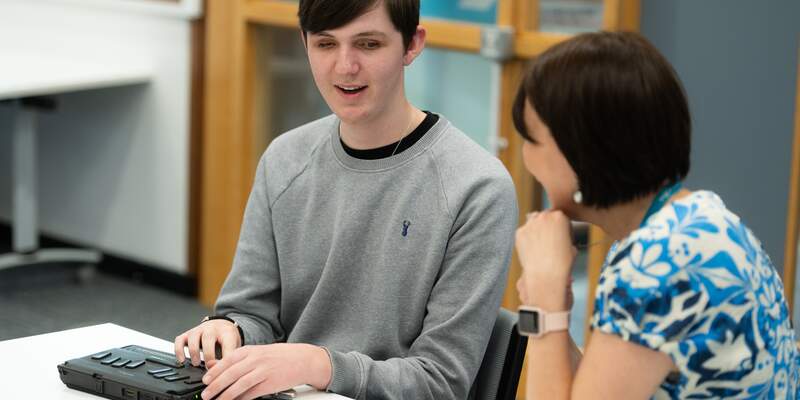
The Supporting VI Students Workshops run by Lilian and Alice have been immensely informative and enlightening and, in my opinion, could and should form a more prominent part of how staff and students approach the academic aspect of university life. Indeed, I feel it is vital that those teaching, supervising or managing courses of study are able to understand and empathise with the needs and experiences of students with additional support requirements as we work towards a more inclusive future, with these workshops constituting an important part of ensuring academic equality for all. At the same time, it is also helpful for fellow students to know more about the different perspectives of their peers, so as to foster a greater level of understanding around how blind and visually impaired students access resources and participate in courses, therefore promoting any future workshops and encouraging individuals from all parts of the university to attend should be an immediate priority.
In terms of the running of the workshops themselves I have no major concerns, and Alice and Lilian are exceptionally well placed to guide group discussions and bring useful ideas to the table, drawing on their wealth of experience in the fields of accessibility and academia to shine a light an area which, thankfully, is being talked about more and more as I myself reach the midpoint of my university journey.
Academic staff reflection
Penny Bickle, Professor, Department of Archaeology
This was an excellent workshop, especially to reflect on best practice, and to hear the perspective from visually impaired students themselves. There were many aspects of the kinds of nuts and bolts teaching that are easily adaptable with a little thought that had not occurred to me at all. For example, how to describe images in lectures to help with the students’ learning, that I think will be of benefit for the whole class, not just visually impaired students. There is also an impressive range of additional resources available which I did not know existed and good discussion on how to use them.
What next
Having learned from running these first two workshops, we now have a clearer idea of how to organise these workshops to help everyone gain maximum value from these in-person interactions.
- Create a practical guide for staff based on outputs from the workshop. The practical guide will share the scenarios, suggested solutions, the FAQs and the images from the second workshop. Some of the questions from the workshops have stimulated further research areas. We hope the guide will be consulted to help people build their understanding and confidence and to log further questions to be researched.
- Run further VI workshops before the start of the second semester. These workshops may be faculty-based as suggested above.
- Run a similar workshop for supporting Hearing Impaired (HI) students. This will help us to work out how to be more inclusive to HI attendees at all our workshops and help us to create a further practical guide!
- Create a community of practice for supporting disabled students using Slack and Google groups to help everyone connect with each other.
If you are interested in organising a workshop for your faculty or team, or can contribute in any way, please get in touch at digacc-support@york.ac.uk.
Many thanks to Alex Holland for photography. Find these images in UoY’s Brand site. Look under ‘assistive technology’.
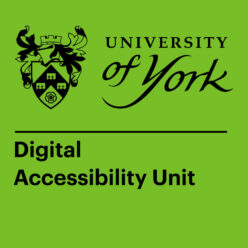
2 thoughts on “Reflections on our Supporting visually impaired students workshop.”